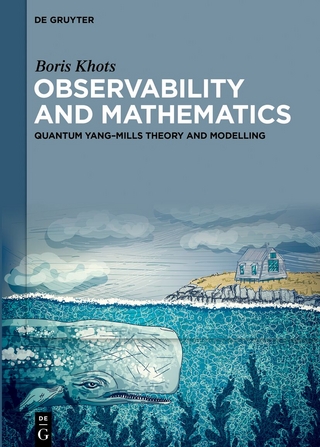
Geometric Quantization and Applications to Fields and Fluids
Springer International Publishing (Verlag)
978-3-031-65800-6 (ISBN)
- Noch nicht erschienen - erscheint am 24.09.2024
- Versandkostenfrei innerhalb Deutschlands
- Auch auf Rechnung
- Verfügbarkeit in der Filiale vor Ort prüfen
- Artikel merken
This book explains geometric quantization from a physicist's perspective. After presenting the general formalism, it delves into several examples reflecting current research interests in high-energy physics and condensed matter physics. Applications explore Chern-Simons theory, theta vacuum, the Hall effect, fluid dynamics, and elements of noncommutative geometry.
The content is tailored to appeal to researchers, graduate students, and advanced undergraduates in high-energy physics, particle physics, and mathematical physics. A background in differential geometry and group theory is beneficial for a comprehensive understanding of the discussions.
V. Parameswaran Nair is a Distinguished Professor of Physics at the City College of the City University of New York. Prof. Nair obtained his Ph.D. in 1983 from Syracuse University defending a thesis on skyrmions and topological features of quantum chromodynamics. He held research associate positions at the Institute for Advanced Study, Princeton and at the Kavli Institute for Theoretical Physics, Santa Barbara before joining the faculty at Columbia University. He moved to City University of New York in 1993. Prof. Nair has published over 160 research papers covering such diverse areas as solitons (skyrmions), anomalies in gauge theories, Chern-Simons theories, field theories at finite temperature, nonperturbative aspects of gauge theories (particularly in 2+1 dimensions), noncommutative geometry, group theoretic approach to fluid dynamics, Casimir effect, etc. Notable research contributions include identifying the relevance of twistors in scattering amplitudes, string tension and mass gap in (2+1)-dimensional gauge theories, anyon wave equations and higher dimensional generalizations of the quantum Hall effect.
Prof. Nair has also published a textbook Quantum Field Theory: A Modern Perspective (Springer, 2005); an advanced undergraduate-level book Concepts in Particle Physics : A Concise Introduction to the Standard Model (World Scientific, 2018) and was the main editor for Particles, Fields and Topology: Celebrating A P Balachandran (World Scientific, 2023). He has also given lectures at several summer schools in physics including the British Universities Summer School in Theoretical Elementary Particle Physics; the Saalburg Summer School on Theoretical Physics (Germany); the Benasque TAE International Workshop on High Energy Physics (Spain); and the Prospects in Theoretical Physics Summer School at the Institute for Advanced Study, Princeton.
Introduction.- Symplectic Form and Poisson Brackets.- Classical Dynamics.- Geometric Quantization.- Topological Features of Quantization.- Coherent States, the Two-sphere and G/H Spaces.- The Chern-Simons Theory in 2+1 Dimensions.- th-vacua in a Nonabelian Gauge Theory.- Fractional Statistics in Quantum Hall E ect.- Fluid Dynamics.- Quantization Rules.- A Comment on the Metaplectic Correction.
| Erscheint lt. Verlag | 24.9.2024 |
|---|---|
| Reihe/Serie | SpringerBriefs in Physics |
| Zusatzinfo | XI, 105 p. |
| Verlagsort | Cham |
| Sprache | englisch |
| Maße | 155 x 235 mm |
| Themenwelt | Naturwissenschaften ► Physik / Astronomie ► Hochenergiephysik / Teilchenphysik |
| Naturwissenschaften ► Physik / Astronomie ► Quantenphysik | |
| Naturwissenschaften ► Physik / Astronomie ► Theoretische Physik | |
| Schlagworte | Anomalies in Fluids • Chern-Simons Theory • Chiral Magnetic Effect • Coherent states • geometric quantization • Quantum Hall Effect • Theta Vacuum • Topological Features of Quantization |
| ISBN-10 | 3-031-65800-0 / 3031658000 |
| ISBN-13 | 978-3-031-65800-6 / 9783031658006 |
| Zustand | Neuware |
| Haben Sie eine Frage zum Produkt? |
aus dem Bereich


